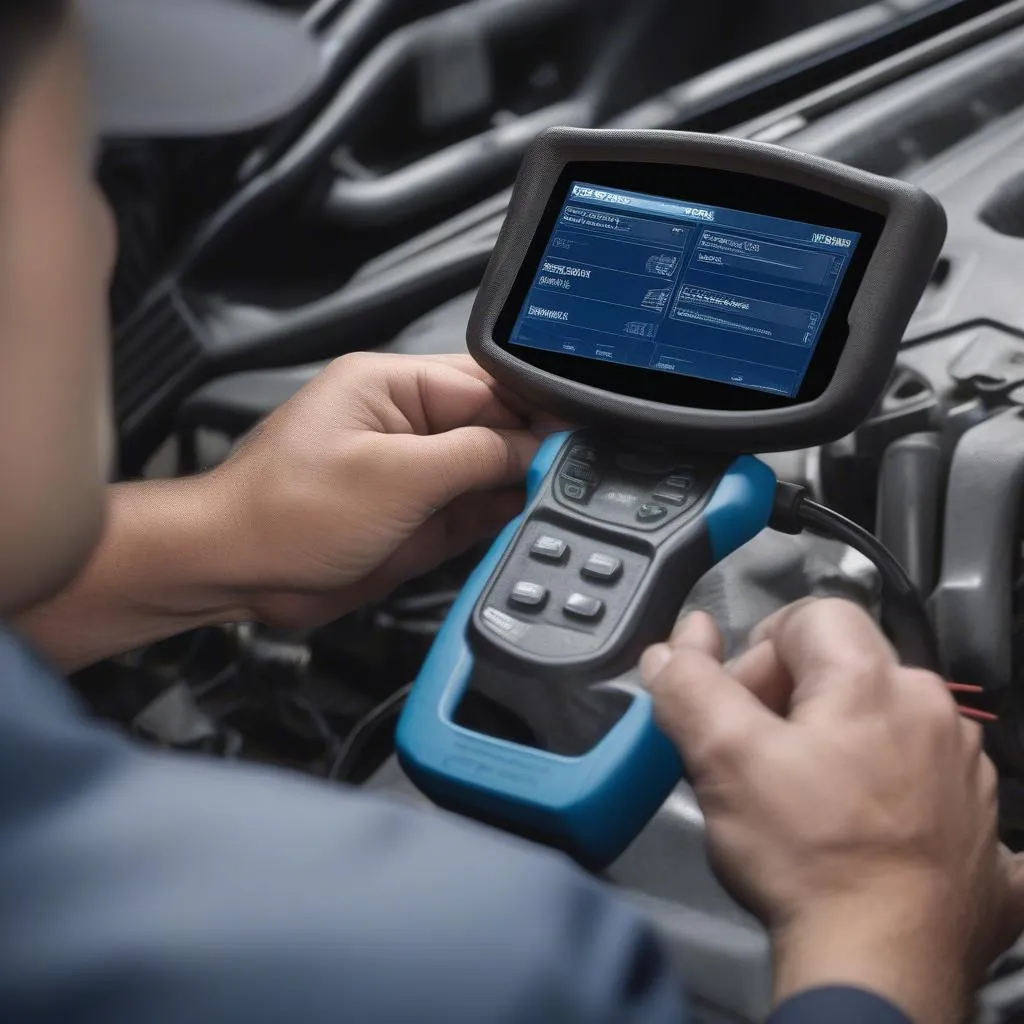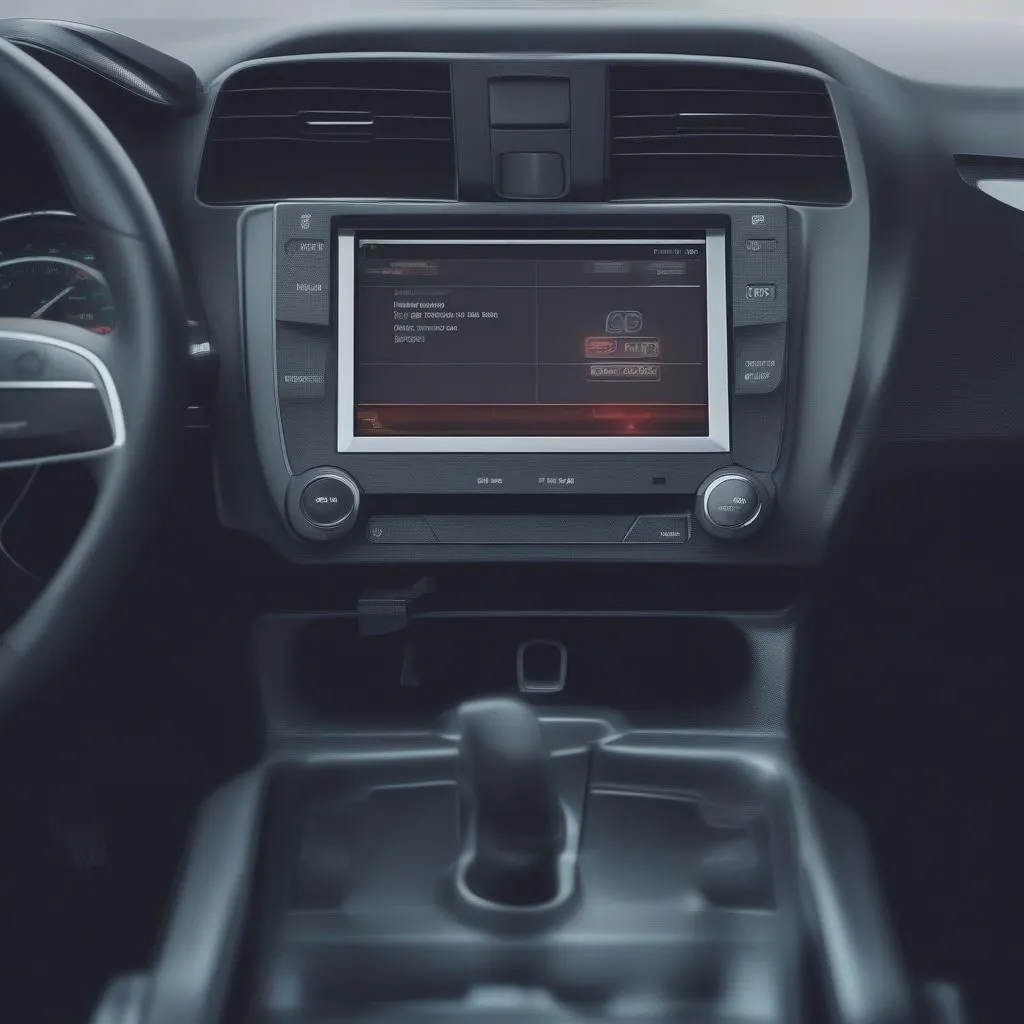Imagine this: you’re driving down the Pacific Coast Highway, California, enjoying the ocean breeze, when suddenly your check engine light pops up. You pull over, heart sinking. What’s wrong? Is it serious? Enter the scan tool, a mechanic’s best friend and your key to understanding those cryptic dashboard warnings. But what exactly are you looking at when you plug it in? Today, we’re diving deep into the world of PIDs, the unsung heroes of car diagnostics.
Deciphering the Acronym: PID Meaning in Automotive Diagnostics
In the realm of automotive diagnostics, PID stands for Parameter ID. Think of it like this: your car’s computer system is a complex network of sensors, constantly monitoring everything from engine temperature to tire pressure. Each piece of data these sensors collect is assigned a unique identifier – a PID.
Let’s break it down from different perspectives:
- For the everyday car owner, a PID is a specific data point about your car’s performance.
- From a mechanic’s standpoint, PIDs are essential clues, revealing the health and performance of various vehicle systems.
- In a technical sense, a PID is a standardized code that allows your scan tool to communicate with your car’s computer and retrieve specific data points.
PIDs: More Than Just Numbers – Unmasking Your Car’s Story
When you connect a scan tool, like those high-end Dealer Scanners for European Cars, it uses PIDs to request specific data from your car’s computer. Instead of seeing just a generic “Engine Coolant Temperature” reading, you’ll see the actual temperature value associated with that PID. This granular level of detail allows for incredibly precise diagnostics.
For instance, let’s say your car is idling rough. A mechanic might use a scan tool to access the PID for “Engine RPM” and notice fluctuations that shouldn’t be there. This could point to a problem with the spark plugs, fuel injectors, or other engine components.
Here are some common scenarios where understanding PIDs proves invaluable:
- Troubleshooting engine issues: PIDs related to fuel pressure, air intake, and ignition timing can help diagnose misfires, poor fuel economy, and lack of power.
- Diagnosing transmission problems: PIDs monitoring transmission fluid temperature, gear position, and shift solenoids can reveal potential issues before they escalate.
- Investigating emissions-related concerns: PIDs for oxygen sensors, catalytic converter efficiency, and evaporative emissions can pinpoint the cause of failed emissions tests.
Expert Insight: “Knowing how to interpret PIDs is like having a secret decoder ring for your car,” says automotive diagnostics specialist, Dr. Emily Carter, author of “The Complete Guide to Automotive Diagnostics.” “It empowers you to understand what’s going on under the hood and make informed decisions about your car’s repair.”
scantool_connected|scan tool connected to car|A scan tool plugged into the diagnostic port of a car, displaying data on its screen
Beyond the Basics: Unveiling Common PID-Related Questions
You might be wondering:
- Are PIDs universal? While some PIDs are standardized across vehicle makes and models, others are manufacturer-specific. This is where a quality scan tool designed for your car’s make comes in handy.
- What if my scan tool doesn’t display the PID I need? Advanced scan tools often allow you to customize the data displayed or even input specific PIDs manually.
- Can I use PIDs for preventative maintenance? Absolutely! By monitoring key PIDs over time, you can identify potential issues before they become major headaches.
Mastering the Art of PIDs: Your Key to Informed Car Care
Understanding PIDs empowers you to be a more informed car owner. While we always recommend consulting a qualified mechanic for complex repairs, having a basic grasp of PIDs can help you:
- Communicate more effectively with your mechanic: Instead of just saying “my car is making a funny noise,” you can provide specific data points gleaned from your scan tool.
- Potentially save time and money: Early detection of issues through PID monitoring can prevent minor problems from snowballing into costly repairs down the road.
- Gain a deeper understanding of your vehicle: By delving into the data your car generates, you can better understand its performance and anticipate potential problems.
mechanic_using_scantool|mechanic using scan tool|A mechanic using a scan tool to diagnose a car problem, looking intently at the screen
Looking for More Car Diagnostic Insights?
Check out these other informative articles on our website:
Need help deciphering your car’s diagnostics? Our team of automotive experts is just a message away. Contact us on WhatsApp at +84767531508 for 24/7 support and guidance. We can help you unlock the secrets hidden within your car’s computer and get you back on the road with confidence.


